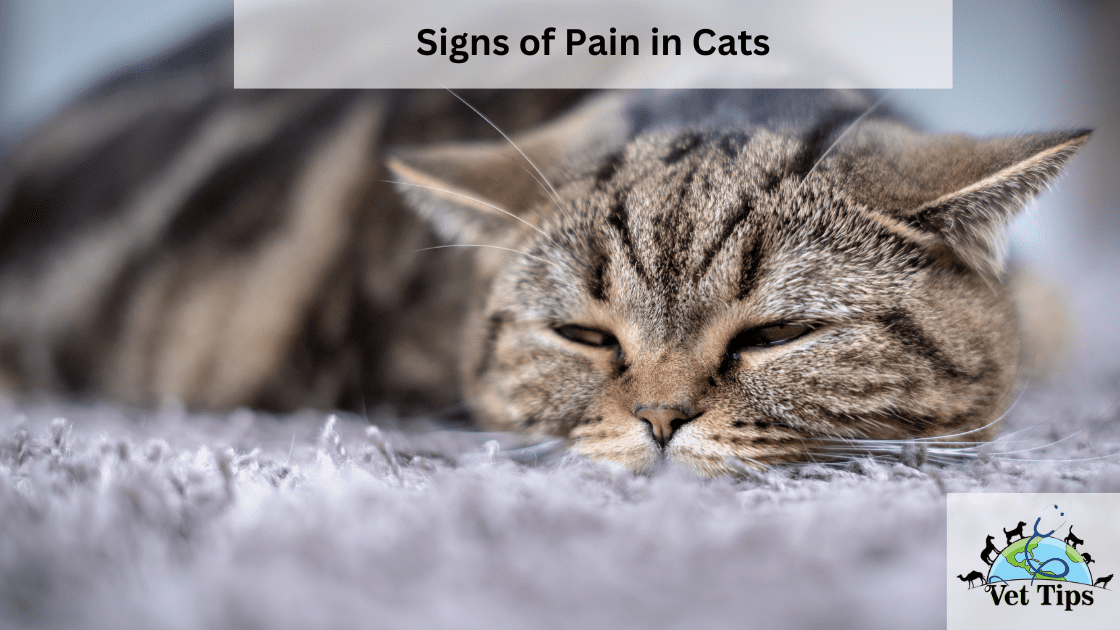As loving and attentive cat owners, one of our top priorities is ensuring the well-being of our feline companions. Cats are masters at masking pain, making it challenging for us to determine when they are experiencing discomfort or suffering. Understanding the signs of pain in cats is crucial for early detection and prompt intervention. In this comprehensive guide, we will delve into the subtle cues and secret language that cats use to communicate their pain, enabling us to be vigilant and responsive to their needs.
Listening to Your Cat’s Silent Signals
Cats are remarkably stoic creatures, instinctually hiding signs of pain as a survival mechanism. However, by observing their behavior and paying attention to subtle changes, we can gain valuable insights into their well-being. Here are some key signs that your cat may be in pain:
1. Changes in Vocalization
Cats communicate with us through their unique vocalizations. An observant cat owner will notice changes in their cat’s meows, purrs, and even growls. If you notice your typically chatty cat becoming unusually quiet or excessively vocal, it may be a sign of pain or discomfort.
2. Alterations in Litter Box Behavior
The litter box can serve as a window into your cat’s health. If your cat is experiencing pain, you may notice changes in their litter box habits. This could include straining to urinate, frequent visits to the litter box without producing much urine, or avoiding the litter box altogether.
3. Decreased Appetite
Cats are known for their love of food, so a sudden decrease in appetite is cause for concern. A cat in pain may lose interest in their favorite treats and meals, indicating that something isn’t quite right.
4. Changes in Grooming Habits
Cats are meticulous groomers, and any changes in their grooming habits can be telling. A cat in pain may groom themselves less frequently or focus excessively on one area as a response to discomfort.
5. Altered Posture and Movement
Pay attention to your cat’s posture and movements. Cats in pain may hunch their bodies, walk with a stiff gait, or hesitate to jump onto furniture or climb stairs.
Pain signs in cat body language
Changes in body language, posture, and behavior can develop gradually or quickly in a cat that is experiencing pain or distress. Increased physical tension, hunching and crouching, and lowering the head are all examples of these behaviors.
Pain signs in cat facial expression
A cat in pain will exhibit a significant change in their facial expression, while others will exhibit a more subtle shift, such as the following behaviors:
- Your cat’s eyes may squint or shut as a result of severe pain
- Their ears may appear squashed or pressed against the sides of their heads or bodies.
- Their lips, nose, and cheeks may seem tighter and compressed as a result of the stress.
Some cats may be less obvious while expressing signs of pain, with parts exhibiting all of the symptoms while others only display some of them.
Some other signs of pain in Cats
- A reduction in pleasant activities like as playing, interacting with others, and taking pleasure in the outdoors.
- Lame appearence and increased sensitivity to touch in particular areas of their bodies.
- Reduction in movement and activity levels.
- Abrupt change in the normal behavior of a cat. Your cat begins to avoid activities that they know or suspect would cause them pain because they are afraid of getting hurt. They are no longer permitted to jump up onto beds or other elevated items due to concerns that they may injure themselves.
- Depressed mood and furious temperament
- Unpleasant or urgent vocalizations like as meowing, moaning, hissing, or growling are acceptable.
- Your cat may attempt to avoid being handled by moving away from people or acting angrily when approached or touched when he or she is in discomfort.
Assessing Pain Levels in Cats
Determining the severity of your cat’s pain can be challenging. Let’s engage in a comparative analysis of potential pain indicators:
1. Behavioral Changes
Behavioral changes, such as aggression, hiding, or excessive vocalization, can indicate varying degrees of pain. An aggressive cat may be experiencing intense pain, while a cat that hides away may be dealing with milder discomfort.
2. Response to Touch
Observe your cat’s reaction to being touched or handled. A cat in severe pain may become agitated or show signs of aggression when touched, while a cat with mild discomfort may simply withdraw or avoid being touched.
Pain Levels and Associated Behaviors
To better understand the relationship between pain levels and behaviors, let’s examine some data:
Graph 1: Pain Levels and Behavioral Indicators
The graph illustrates the potential pain levels in cats and the corresponding behavioral indicators.
| Pain Level | Behavioral Indicators |
|---|---|
| Mild Discomfort | Decreased appetite, changes in grooming habits |
| Moderate Pain | Altered posture and movement, hesitancy to jump |
| Severe Pain | Aggression, excessive vocalization, withdrawal |
Table 1: Pain Levels and Response to Touch
A comparison of the potential pain levels in cats and their typical responses to touch.
| Pain Level | Response to Touch |
|---|---|
| Mild Discomfort | Withdrawal, mild sensitivity to touch |
| Moderate Pain | Flinching or pulling away when touched |
| Severe Pain | Agitation, aggression when touched |
FAQs: Signs of Pain in Cats
Should I give my cat pain medication at home?
Never give your cat pain medication without consulting a veterinarian first. Some human medications can be toxic to cats, and the proper dosage and type of pain relief should be determined by a professional.
Can cats experience chronic pain?
Yes, cats can experience chronic pain due to various health conditions like arthritis or dental issues. Chronic pain requires ongoing management and veterinary care.
Is there a natural way to alleviate my cat’s pain?
Some natural remedies, like omega-3 fatty acids and acupuncture, may help manage cat pain. However, it’s essential to consult with a veterinarian before trying any alternative treatments.
“Signs of Pain in Cats” is the most common dialogue discussed by cat enthusiasts nowadays. So, let us discuss what are all the signs of pain in cats and how you properly identify the pain.
Tell us in the comments, how you like our article “Signs of Pain in Cats”
For similar posts like this, click here.
For the source file, click here.






One thought on “Signs of Pain in Cats: Decoding Their Secret Language”